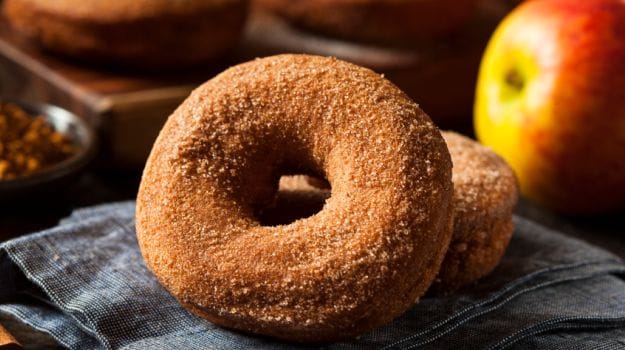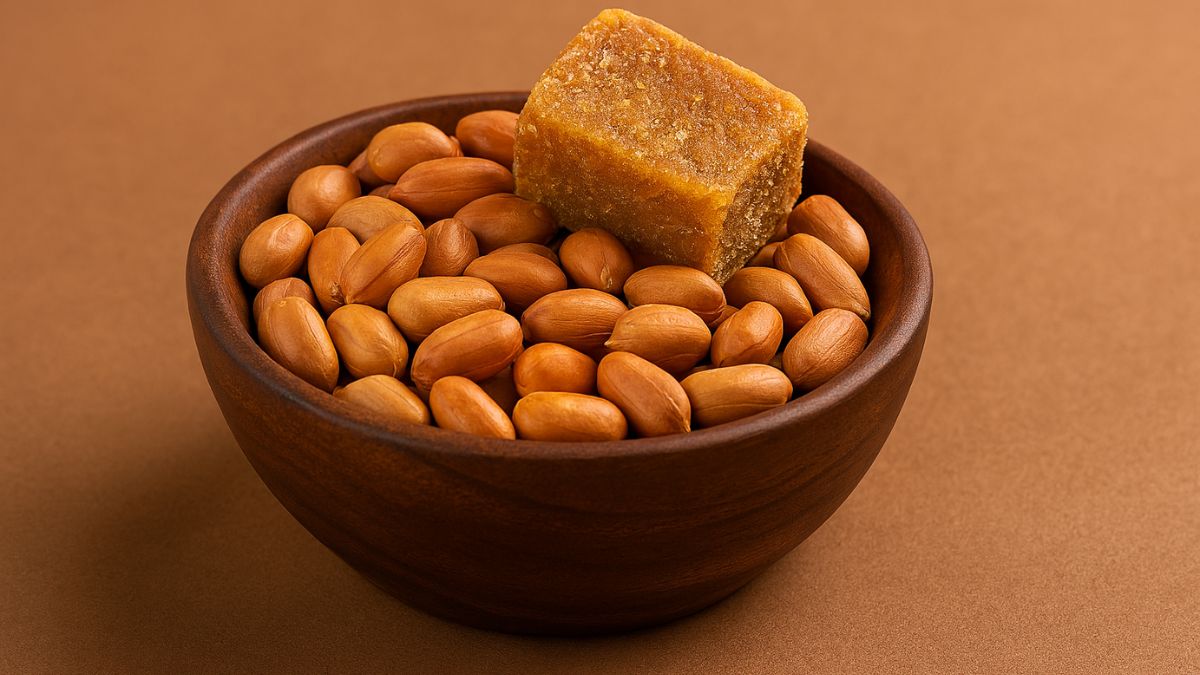They are soft, spongy, and they mostly come with their characteristic hole at the centre. All of us at some point in time must have wondered about the hole in the doughnut. Why would the makers of the delicacy want to keep us away from a chunk of goodness from a whole doughnut? Turns out that it was a deliberate move by a certain American sailor way back in the 19th century. And we all have much to thank him for the novel idea.The most popular theory behind the hole in the doughnut is credited to Captain Hanson Gregory, a native of Maine and a sailor on the American shores. Incidentally, the original doughnuts were whole pieces of sweetened flour dough, fried deep in oil, and were referred to as fried cakes. The ‘cakes’ were shaped into rounds, diamonds, and also as long strips, bent in half, and then twisted (called twisters). When the cakes were fried, they used to turn up fine around the edges, but in the middle the dough would remain raw.

This raw dough got Captain Gregory thinking, and he came up with a novel idea for the even cooking of these cakes, which was to get rid of the centre completely. As the cruise got over, he went back home and showed his mother how to cook the doughnuts in the new style he just discovered. For his later voyages, she made the doughnuts the way he had showed her, and thereon it got popular with others. Soon no one made the doughnuts in any other way than the way he had designed.
(Also Read: Meet the Glow-in-the-Dark Doughnut Everybody is Loving!)
 An outlandish theory also suggests that Gregory was a man who loved his doughnuts as much as his sails. The theory goes on to state that Gregory needed both hands to steer his ship during a storm, so he skewered some of the fried cakes on the spokes of the ship's wheel so that he didn’t have to miss out on his beloved doughnuts even in the midst of a hailstorm. The theory was put to rest as soon as Gregory himself went on record in 1916 and confirmed the first theory.In Rockport, ME, one can find a plaque inscribed with the following: "In commemmoration. This is the birthplace of Captain Hanson Gregory, who first invented the hole in the doughnut in 1847. Erected by his friends, Nov. 2, 1947."
An outlandish theory also suggests that Gregory was a man who loved his doughnuts as much as his sails. The theory goes on to state that Gregory needed both hands to steer his ship during a storm, so he skewered some of the fried cakes on the spokes of the ship's wheel so that he didn’t have to miss out on his beloved doughnuts even in the midst of a hailstorm. The theory was put to rest as soon as Gregory himself went on record in 1916 and confirmed the first theory.In Rockport, ME, one can find a plaque inscribed with the following: "In commemmoration. This is the birthplace of Captain Hanson Gregory, who first invented the hole in the doughnut in 1847. Erected by his friends, Nov. 2, 1947."
 Some Historians also claim that the doughnut hole was in fact a Dutch discovery in the U.S, that the Pennsylvania Dutch cut the centres to ensure even frying and easier dunking. While the ease in even frying of the doughnuts seem to be a plausible theory, the theory of adapting to the doughnuts with a hole can also be linked with the rising popularity of bagels, which were frequently sold on sticks on the Lower East Side of New York City. The hole-y doughnuts cashed in on the success of the street side popularity of the fried bagels and carved a niche for themselves on the streets of New York, and now the whole world.
Some Historians also claim that the doughnut hole was in fact a Dutch discovery in the U.S, that the Pennsylvania Dutch cut the centres to ensure even frying and easier dunking. While the ease in even frying of the doughnuts seem to be a plausible theory, the theory of adapting to the doughnuts with a hole can also be linked with the rising popularity of bagels, which were frequently sold on sticks on the Lower East Side of New York City. The hole-y doughnuts cashed in on the success of the street side popularity of the fried bagels and carved a niche for themselves on the streets of New York, and now the whole world.

The Doughnut's dough would remain raw in the middle. Photo Credits: iStock
This raw dough got Captain Gregory thinking, and he came up with a novel idea for the even cooking of these cakes, which was to get rid of the centre completely. As the cruise got over, he went back home and showed his mother how to cook the doughnuts in the new style he just discovered. For his later voyages, she made the doughnuts the way he had showed her, and thereon it got popular with others. Soon no one made the doughnuts in any other way than the way he had designed.
(Also Read: Meet the Glow-in-the-Dark Doughnut Everybody is Loving!)

These round, crispy balls of delight got shaped with a hole in the middle. Photo Credits: iStock

Captain Hanson Gregory is popularly credited with the invention of the doughnut's hole. Photo Credits: iStock
Advertisement
About Sushmita SenguptaSharing a strong penchant for food, Sushmita loves all things good, cheesy and greasy. Her other favourite pastime activities other than discussing food includes, reading, watching movies and binge-watching TV shows.













